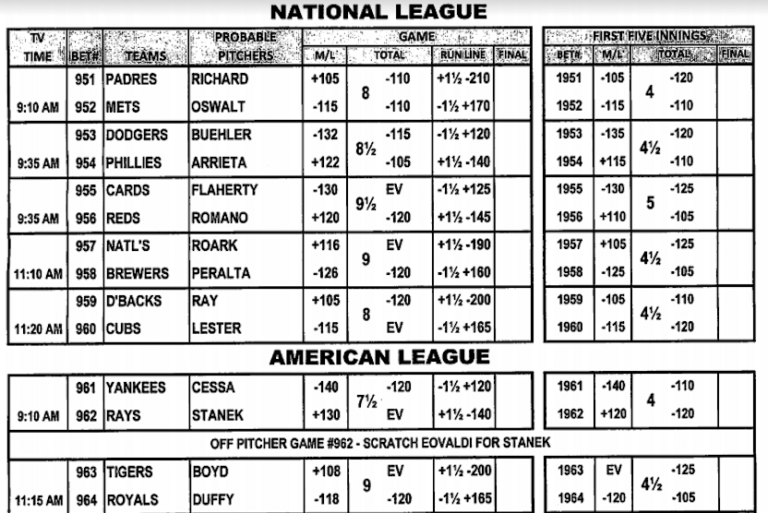

Nullam quis risus eget urna mollis ornare vel eu leo. Aenean lacinia bibendum nulla sed
- @skillable
You are not alone, most of us do! Wagering on sports will soon be coming to a state near you, opening up real sports book betting opportunities to millions of Americans who previously either bet online, or through their local bookie, or maybe once a year when they visited Nevada. There is a procedure you should go through before making any sports wager. No matter whether it’s your first bet or your thousandth, there is a procedure.
All right, you can’t lose. I’ll put you down for $5.00. Now don’t forget about the 14-point spread.
Mike Damone, Fast Times at Ridgemont High

And consider what lines or totals may offer value. Accurate and up to date betting line information is within easy reach via your mobile phone or computer. Look at the current game lines, game start times and weather. Get a sense of whether a line “feels right” or may offer “value.” This is a conscious process and you should think about it before you walk into the sports book.
Somewhere in the sports book the daily betting sheets will be available to you. Take the sheet or sheets that correspond with whatever it is you intend to bet on. The sheet will display the current information at the time the sheet was printed. This may have been hours ago. Now, you must update it.
The betting sheets are typically laid out the same, no matter what sport you intend to wager. I have included a Pro Baseball sheet, but football, basketball, and hockey will be similar.
The left side gives the starting time of the contest, specific to the time zone you are in.
To the right of that is the Bet Number, also called the Rotation Number and often referred to as the Game Number.
To the right of that are the probable starting pitchers. Some sheets list whether the pitcher is left-armed, denoted (L), or right armed, denoted (R). You should know which arm the pitcher throws with.
To the right of the pitchers is the Game Money Line, sometimes denoted M/L.
The Game Total is listed next, which you may bet Over or Under, with the corresponding money line odds.
Then we see the Run Line. This is always plus or minus (+/- ) 1.5 runs.
Adjacent to that is the baseball First Half betting, which allows you to bet what you think will happen in the first five full innings. These numbers are laid out the same as the Full Game numbers.
Now you must update this information. For a variety of reasons, sports books will change money line odds throughout the day. If something has changed, the money line will change. It is up to you to determine why the money line changed. It could be that more money is being wagered on one side and the sports book wants to attract money to the other side by offering a better money line payout. Perhaps the weather changed, which may affect the total. The sports book likely will not tell you why they changed the numbers. It is up to you to determine if the change is significant enough to affect your opinion of the game and whether to wager. Use the magic of the internet to assist you with your updates. These days, smart phones are typically allowed in sports books, just do not use them at the betting window or take photos of the betting board.
Okay, so you know what you are going to do. Hopefully you have made notes on your betting sheet reminding you of exactly how you will bet the contest. Walk up to the betting window or ticket writer and get your money down. As you tell the ticket writer the bet you want, the current odds should be displayed on some device or screen at the window.
These are the odds at that instant in time. They may be different from what you wrote down, even if you updated your information two minutes ago. If the current odds are acceptable to you, tell the ticket writer, in this order:
(For games that uses spreads such as football and basketball)
In real words it goes like this, “I would like to bet the Over in Game Number 951/952, for $55.” The ticket writer will know what you mean. If not, he or she will ask. Pay the ticket writer and be sure to check the ticket.
Before you walk away with your wager
If your sports book gives out drink coupons with sports wagers, be sure to ask for the coupon before you leave the window. That’s just good value!

Nullam quis risus eget urna mollis ornare vel eu leo. Aenean lacinia bibendum nulla sed
